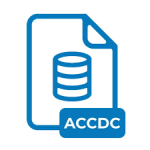.QRY File Extension

Query File
| Developer | N/A |
| Popularity | |
| Category | Database Files |
| Format | .QRY |
| Cross Platform | Update Soon |
What is an QRY file?
.QRY files, or Query files, are text-based files commonly used to store queries for databases or other data processing applications.
These files contain instructions or commands written in a specific query language, such as SQL (Structured Query Language), which is widely used for managing relational databases. The queries stored in .QRY files can range from simple data retrieval requests to complex database manipulation operations.
More Information.
.QRY files gained prominence in the era of desktop database applications, such as Microsoft Access and dBASE, during the 1980s and 1990s. These files allowed users to save frequently used queries for future reference or sharing with colleagues.
Additionally, .QRY files facilitated the automation of repetitive database tasks by enabling users to execute predefined queries with a single command.
Origin Of This File.
The concept of query files originated alongside the development of database management systems (DBMS) in the late 20th century.
As businesses and organizations increasingly relied on digital data storage and retrieval systems, the need for standardized methods to query and manipulate databases became apparent. .QRY files emerged as a means to store and share database queries across different platforms and applications.
File Structure Technical Specification.
.QRY files typically consist of plain text encoded in ASCII or Unicode format. The structure of these files is straightforward, comprising one or more query statements written in the respective query language supported by the database system.
Each query statement is separated by a delimiter or newline character, making it easily readable and editable using any text editor.
Technical specifications for .QRY files may vary depending on the database management system or software application used to create them.
They generally adhere to the syntax and conventions of the supported query language, such as SQL. This ensures compatibility and interoperability across different platforms and database environments.
How to Convert the File?
Converting .QRY files to other formats or vice versa may be necessary to accommodate specific requirements or compatibility issues. The conversion process typically involves the following steps:
- Identify Conversion Needs: Determine the desired output format or file type based on the target application or system requirements.
- Select Conversion Tool: Choose a suitable conversion tool or software application capable of converting .QRY files to the desired format. Several third-party conversion utilities or database management software packages offer built-in conversion functionality.
- Convert the File: Use the selected conversion tool to convert the .QRY file to the desired format. Follow the on-screen instructions or prompts to complete the conversion process.
- Verify Conversion Results: After conversion, verify the integrity and accuracy of the converted file to ensure that the data is preserved and formatted correctly.
Advantages And Disadvantages.
Advantages:
- Portability: .QRY files can be easily shared and transferred between different database applications and platforms, allowing for seamless collaboration and interoperability.
- Reusability: By storing frequently used queries in .QRY files, users can save time and effort by reusing predefined queries instead of recreating them from scratch.
- Automation: .QRY files enable the automation of database tasks by allowing users to execute predefined queries through scripting or batch processing, streamlining workflow processes.
Disadvantages:
- Limited Functionality: .QRY files are primarily designed for storing and executing database queries and may lack support for advanced features or functionalities offered by database management systems.
- Security Risks: Since .QRY files contain plain text queries, they may pose security risks if sensitive or confidential information is stored within them. Proper encryption and access controls should be implemented to mitigate these risks.
- Compatibility Issues: While .QRY files are generally compatible with most database applications that support the respective query language, there may be compatibility issues when transferring files between different software versions or platforms.
How to Open QRY?
Open In Windows
- Microsoft Access: Open .QRY files directly in Microsoft Access or import them into an existing database.
- Notepad or any text editor: Use a text editor such as Notepad to view and edit .QRY files.
Open In Linux
- ibreOffice Base: Open .QRY files in LibreOffice Base, a free and open-source database management application for Linux.
- Vim or any text editor: Use command-line text editors like Vim or graphical text editors to view and edit .QRY files in Linux.
Open In MAC
- Microsoft Access (via virtualization or emulation software): Access .QRY files using Microsoft Access running on Windows emulation software like Parallels Desktop or VMware Fusion.
- TextEdit or any text editor: Use TextEdit or any compatible text editor to open and modify .QRY files.













